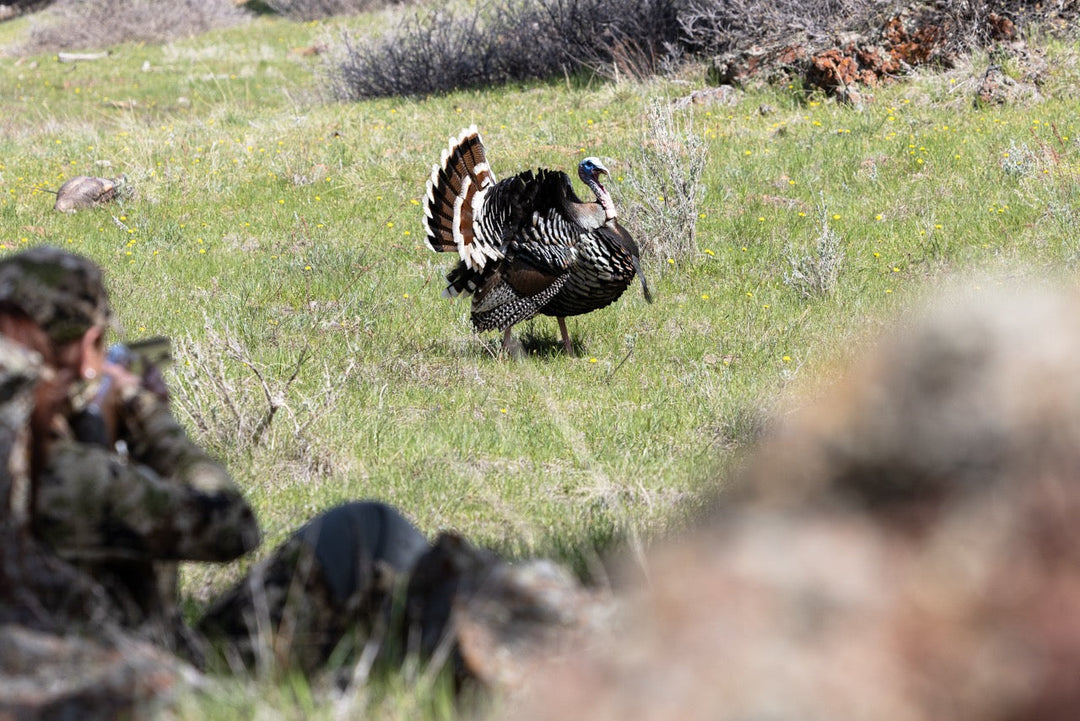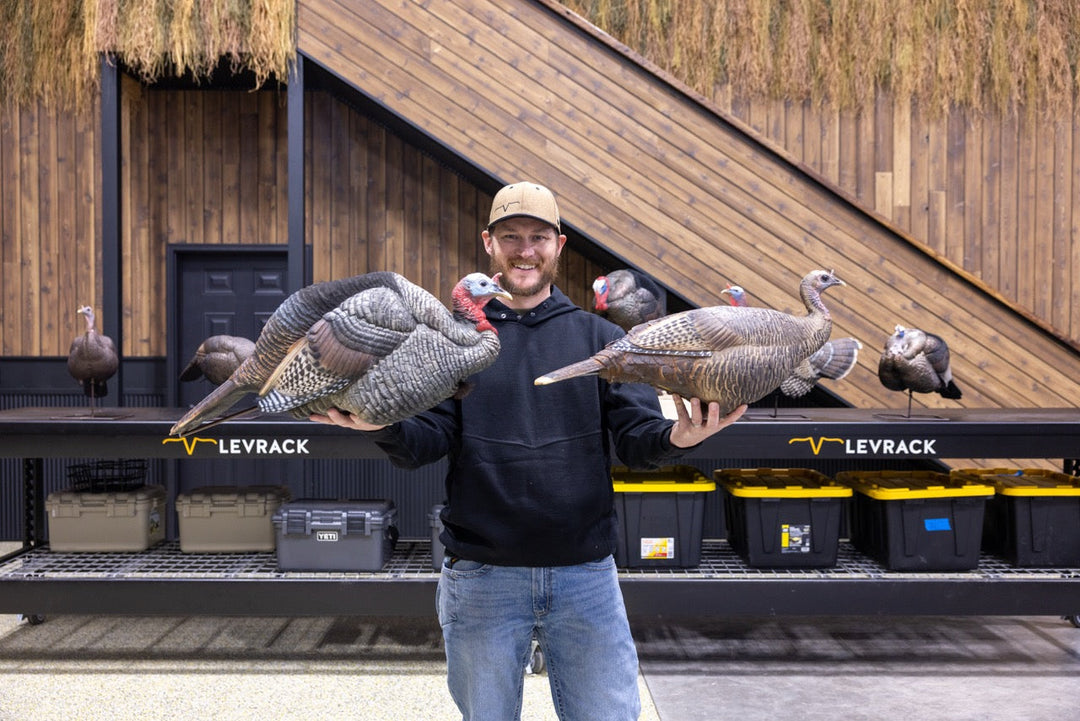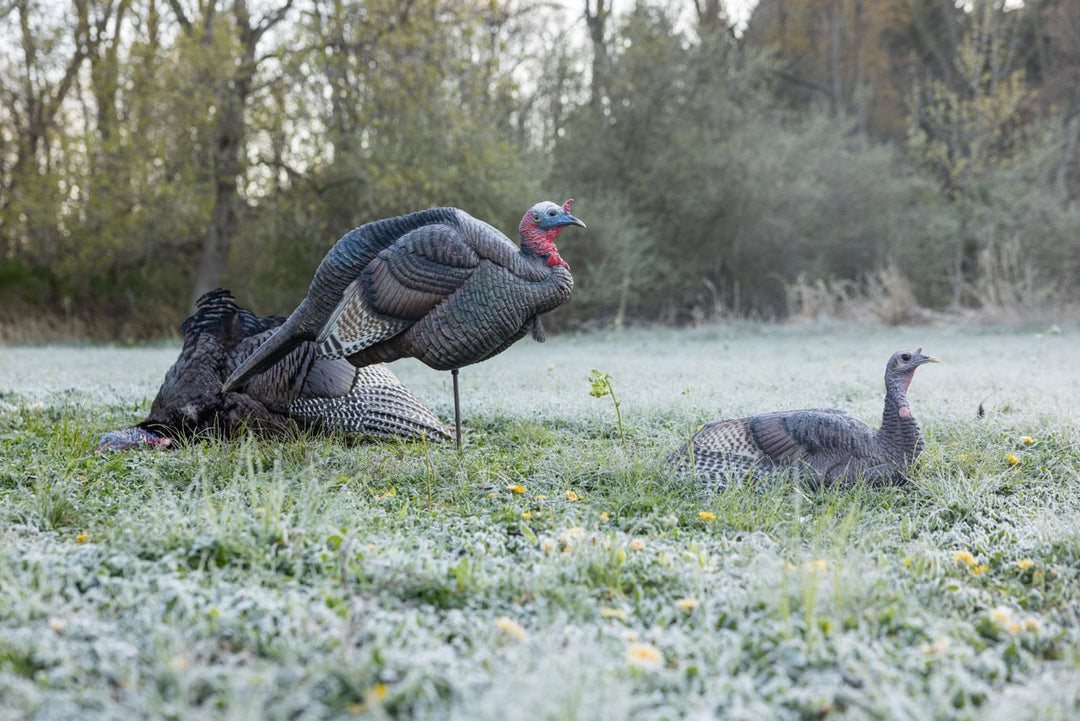How to Pair Turkey Decoys: Real Setups for Early, Mid, and Late Season
Turkey hunting isn’t just about sounding good—it’s about setting a scene. The right decoy pairing can turn a cautious gobbler into a hard charger. In this VDU, Matt from Flying V walks through real-world decoy spreads that have worked for him and the crew across early, mid, and late season hunts.
This isn't guesswork. These are field-tested pairings for pressured birds, henned-up toms, and quiet late-season stragglers.
1. Pressure Play: The Breeding Trio
When to use it:
- Late morning birds that went quiet
- Henned-up toms ignoring basic spreads
- When strutters didn’t work
Setup:
- Feeding Hen out front
- Breeding Hen (Suzie) down and ready
- Breeding Jake on top (Humper Hank), in motion
Why it works: This trio hits all the notes. The feeding hen says “we’re relaxed,” the breeding hen says “we’re ready,” and the Jake in action says, “he beat you to it.” That’s all it takes to flip a tom’s dominance switch.
Add motion to Hank (small pulls, erratic rhythm), and it turns from scene to fight scene.
Related: Check out our full Jake Decoy Breakdown to understand why head color and posture matter.

2. Early Season: The Confidence Setup
When to use it:
- Birds still running in flocks
- Pulling toms off dominant hens
- Roost-to-ground interactions
Setup:
- Posturing Hen (leader)
- Feeding Hen (confidence/support)
- Red-headed Posturing Jake (aggression)
Why it works: Early in the season, the real boss in a turkey flock is the lead hen—not the tom. This spread lets you call to her directly. The dominant hen sees your decoy challenging her pecking order and comes to fight. The tom follows. Classic jealousy play.
Calling Tip: Match the hen’s energy. If she’s cutting, you cut back. Mimic her rhythm to pull her in.
Want more detail on early season hen behavior? Revisit our Hen EDU for full posture breakdowns.

3. Mid-Season: The Two-Bird Realism Spread
When to use it:
- Peak breeding (late April through mid-May)
- Toms without hens
- Run-and-gun hunts with high mobility
Setup:
- Leading Hen decoy out front
- Three-quarter Strut Jake following 3–6 feet behind, quartered to expected approach
Why it works: It’s simple, believable, and deadly. This is the natural order of spring—a Jake chasing a hen that’s still on the move. Use this when mobility matters or when you need to pull in a lone tom cruising through.
These two decoys fit in one bag and are great for solo hunters covering ground.
4. Late Season: The Three-Hen Finish
When to use it:
- End of May
- Gobblers with silent fly-downs
- Stubborn birds slipping you all season
Setup:
- Upright Hen (visibility)
- Feeding Hen (relaxed)
- Leading Hen (motion/direction)
Why it works: Late-season gobblers don’t waste time. They want easy wins. This spread mimics a small flock and gives him three clear targets with different silhouettes. Set it up with good sun exposure so he can see the scene clearly on fly-down.
Pro Tip: Aim at the Jake (or the bird you want to shoot) during setup. You won’t have time to swing later.
Final Thoughts
Great calling helps—but decoy pairing tells the full story. Whether you’re pressuring a henned-up tom with Humper Hank, arguing with a lead hen at fly-down, or running a minimalist mid-season duo, these setups are based on real hunts, real birds, and real wins.
Want more turkey tactics? Check out the full Turkey EDU playlist on YouTube or read our Jake Decoy Tactics and Hen Decoy Guide to complete the playbook.








Leave a comment